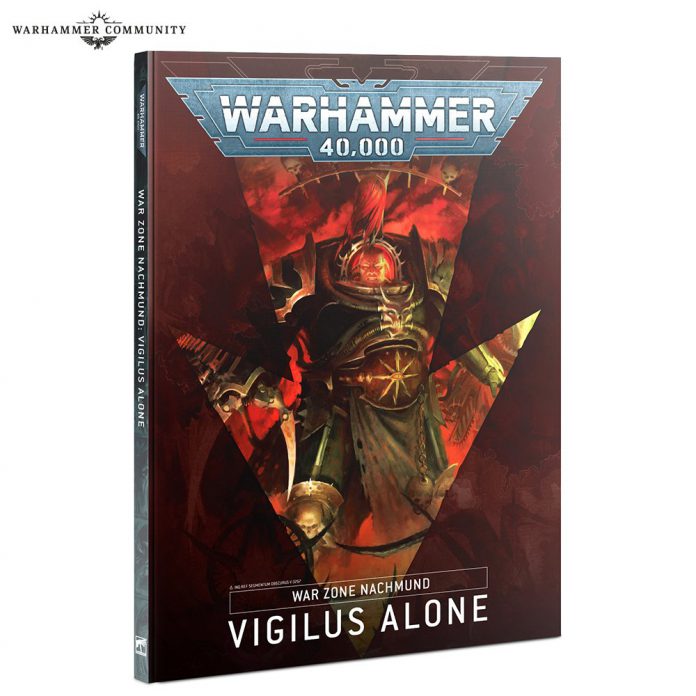War Zone Nachmund: Vigilus Alone is the newest campaign book for Warhammer 40k, following the releases for Charadon and Octarius. Similar to those books, there’s a hefty narrative rules section in the book, giving players everything they need to play a campaign in the sector. There are three sets of narrative play rules here:
- War of Faith campaigns
- Battle zone Fronteris
- Army of Faith Crusade Rules
As far as these campaign books go, Vigilus Alone went much heavier on the narrative play rules over Matched Play than previous books so there’s a lot to dig into here. Before we do, we’d like to thank Games Workshop for providing us with a preview copy of the book for review purposes.
War of Faith Campaign
The big thing in this round of narrative materials is wars of faith, where armies devote themselves to particular ideologies or deities and are rewarded on the battlefield in various ways. That’s the angle of the new Crusade supplement as well, and in that sense Vigilus Alone goes harder on that angle than before.
Running a Campaign
Vigilus Alone spends two pages outlining the basics of running a campaign and if you’ve picked up a campaign book before, these will be familiar to you. The rules call for appointing a Campaign Master to act as de facto GM throughout the campaign, and empowers that player to award bonuses and edicts to players who are struggling. Unlike prior campaigns however, War of Faith campaigns only have two sides – Imperial and Chaos – with other armies acting as Allies of Convenience for whatever reason. They give some compelling reasons for different armies like Aeldari and Necrons to work with either side but this is still a bit disappointing compared to the Imperium/Chaos/Raiders set-up we’ve seen in prior books, particularly since, unlike the tree campaigns of Octarius, the structure in this book lends itself better to multiple factions.
War of Faith campaigns are split into phases, during which battles determine each faction’s control of the sector. The book recommends phases allow each player to play at least one game, and that the campaign go no longer than 5-7 phases.
Tracking Progress
War of Faith campaigns use a tracking system to denote faction control of three critical war zones: Dontoria, Storvhal, and Hearthlack (though you could add others if you were so inclined). At the end of each campaign phase, the Campaign Master moves a marker along each war zone’s control track based on how many games that faction won. Games are worth more points at larger point values.
At the end of the campaign, each side scores points for how firmly they held control of each region, with the winning side being the side that has the most points.
War Zone Abilities
In addition to these rules, each critical war zone has specific rules for playing games in that zone. These… aren’t great. One of them falls under the “random mortal wounds” philosophy of battlefield effect creation, while the other two give bonuses to chaos and imperium armies that are wildly unbalanced.
- Dontoria provides benefits to armies on the Imperial and Chaos sides – Imperial allies get a once-per-turn full re-rolls on hits and wounds in either the shooting or fight phase (holy shit). Meanwhile Chaos Allies get a once-per turn ability to roll a 2+ to do 1 mortal wound to a unit outside its controller’s deployment zone and drop its Ld by 2 for a turn. These are insanely unbalanced, with the imperial side being much more powerful and used twice as often (since it activates every turn).
- Storvahl is wracked by tectonic instability, causing tremors that can do D3 mortal wounds to random units every turn and halve the Move characteristics of units.
- Hearthlack gives separate bonuses to Imperial and Chaos allies: Imperial alliance units get +1 to combat attrition tests, while Chaos allies get +1 to hit against enemy Character units. Again, wildly unbalanced, this time in Chaos’ favor.
I’m not quite sure what the thinking behind these is – ideally Dontoria and Hearthlack would switch half their rules to create more balanced sets but here we are. As-is I’d just ignore these or find some other way to differentiate your war zones unless you’re playing the legendary missions. Speaking of which…
Legendary Missions
As with prior campaign books, Vigilius Alone has three Legendary Missions, asymmetrical scenarios that serve as decent end points for a campaign phase. Each one is set in a different war zone, and it may be more likely that the missions help offset the balance challenges of the war zone abilities.
Crusade Rules
One of the odder parts of the 9th edition campaign books is that they tend to contain custom Crusade rules that are separate and different from – but usually thematically linked to – the Crusade rules in whatever booklet released concurrently. In this case, Vigilus Alone gives us Crusade rules for the Armies of Faith, Imperial armies united against Chaos by their Faith in the Emperor, a bunch of Space Marine banner relics, and rules for Battlezone Fronteris.
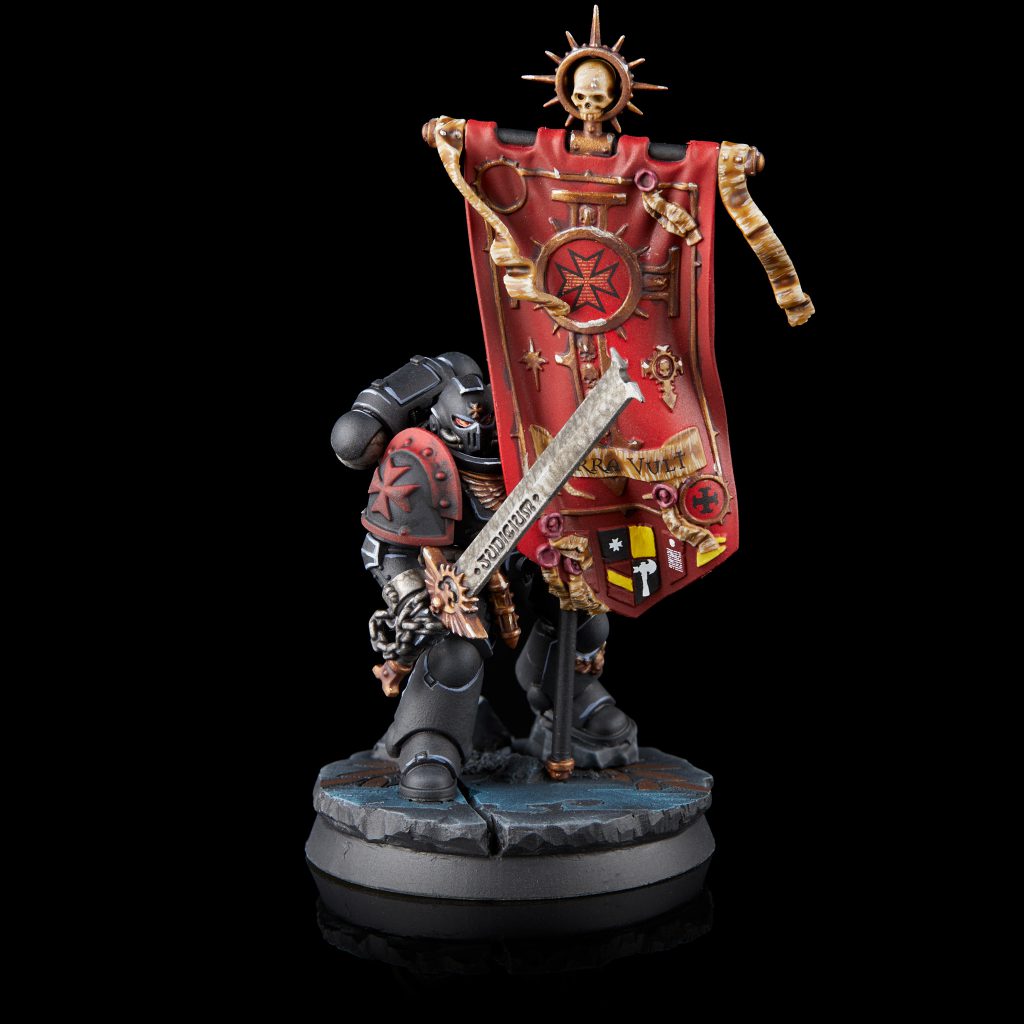
Banners of Renown
Banners of renown are basically special relic banners for Space Marines to throw on their Ancients. The book gives us a new Requisition – Banner of Renown – which for 1 RP lets you upgrade an Adeptus Astartes Ancient in your Order of Battle with the Banner of Renown Keyword. From then on out you track that mode’s Renown tally each battle for doing stuff like planting the standard via the agenda, getting into your opponent’s deployment zone, destroying enemy characters, etc. These are used to purchase renown upgrades. Every banner upgrade increases your Crusade Points by 1.
Banner of Renown Upgrades
Spend renown to buy upgrades. These cost between 10 and 30 renown, with the cheapest, Artisanal Ministrations (10), removing a banner damage effect. Others, such as Glorious Final (25), gives friendly core and character units within 6” a 5+ invulnerable save. Tassels of Duty (20) gives friendly chapter Core units within 6” the ability to make ranged attacks while doing actions.
On the whole these are pretty neat, and none of them is so insanely strong that I’d say they throw everything off. Most of them are auras and they all give ancients a little more utility in battle. Of course, getting a special banner means you have to protect it as well, and that’s where damage comes into play.
Banner Damage
Every time your Banner of Renown model is destroyed you have to take an extra out of action test for the banner. If you fail, then the unit takes banner damage and you have to roll for an effect. These are basically debuffs, such as reducing the Ld of nearby models by 1 or reducing the range of the banner’s aura abilities by 3”. Damage reduces your Crusade points by 1. You can’t have the same effect twice.
Overall this is a fine balancing mechanic and creates a cool additional dynamic for the banners, giving you a sacred relic that you have to care for in the same way your chapter does. It’s a neat mechanic. Is it too much to track? Possibly. But what is Crusade if not an exercise in Imperium-level bookkeeping?
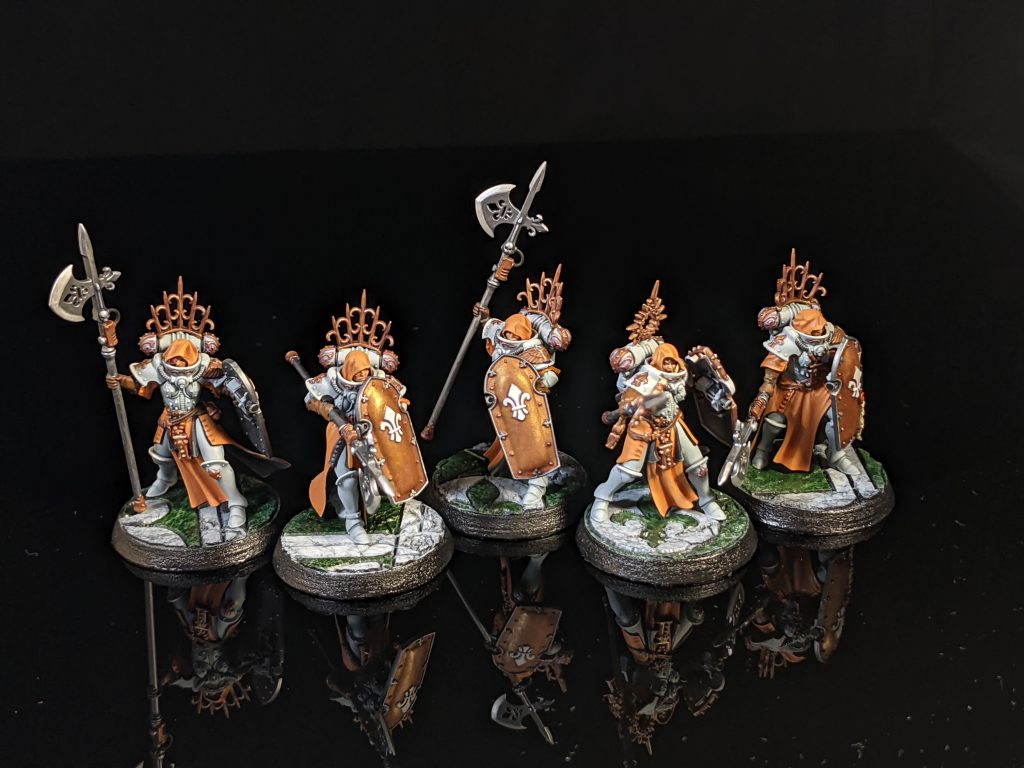
Armies of Faith
Armies of Faith are the new way to run an Imperial army in Crusade, similar to the Torchbearers force in White Dwarf that was released last year. Broadly speaking, an Army of Faith is an army of religious zealots powered by their faith in the Emperor. Narratively speaking, this is basically a structure built for a combined Black Templars/Adepta Sororitas/Astra Militarum force, though you can use whatever space marines chapter you want.
Mustering an Army of Faith
When you first create your Army of Faith Order of Battle it can only contain non-Deathwatch Adeptus Astartes units, Adeptus Ministorum units, and Astra Militarum units. Every time a unit is added to your Order of Battle it gains the Army of Faith keyword.
An Army of Faith detachment will still count as an Adepta Sororitas, Adeptus Astartes and Astra Militarum Detachment for the purpose of any Detachment abilities your army gains and the ability to use Stratagems. What will be replaced is your Chapter Tactics, Order Convictions and Regimental Doctrines, which are covered later in the Fervour and Retribution Stages.
When mustering your army for a battle, you will need to keep two things in mind. First off you must include at least one PRIEST unit such as a Chaplain, the Dogmata or Ministorum Priest. And lastly, to field a faction’s non-troop choice you must also include at least one of that faction’s Troops unit. To field three lander raiders, you would need a unit of Intercessors for example.
From there your army progresses through two stages: The Fervour and Retribution stages, during which it will gain and lose Religious Fervour points and gain upgrades. Also there are some relics which will have different abilities depending on what stage you are currently in.

Fervour Stage
The Fervour Stage represents the build of religious fervour of your Cursade army that will grow to the point where it will peak and spill over into the Retribution Stage. Whilst your force is in the Fervour stage, your Chapter Tactics, Order Convictions and Regimental Doctrines are replaced with Faith in the Emperor where you add 1 to the Leadership characteristics of your models and each unit gets a single reroll to hit whenever they shoot ot fight.
Also available is the Agenda Reclaim the Relic which features a unique spin of the typical ‘add another objective’. In this one, your opponent setups on one Relic of the Faithful objective marker anywhere on the board not within 9” of a battlefield edge. This objective marker represents a Relic of the Faithful that must be reclaimed but doesn’t count as an objective marker for any rules purpose other than for this Agenda.
TLDR – Your opponent can’t touch or hold the Relic as it doesn’t count as a mission objective for either of you but it does behove your foe to deny you from taking it out of sheer spite.
Your Infantry units can perform the Carry Relic of the Faithful action at the end of their movement phase if they are within 1” of the Relic of the Faithful objective marker which is completed successful at the end of your turn assuming you’re still within 1” and not in engagement range of the enemy. Remove the Relic of the Faithful objective marker from the battlefield and select a model from the unit to carry the Relic of the Faithful.
While carrying the Relic of the Faithful you may not use any Transports or any rules that enable it to be removed from the battlefield and set back up again elsewhere. If the model is destroyed then the Relic of the Faithful is returned to the battlefield close to where the model was destroyed.
At the end of the battle if you control or hold the Relic of the Faithful objective then you will gain 3 Religious Fervour points. You will also select any unit within range of the objective and that unit will gain 4 XP.
There is also the Requisition Martyrs to the Cause which you may purchase for 1RP when a unit from your army fails an Out of Action test. This will remove the unit from your Order of Battle completely and any Crusade points it had will become Religious Fervour points.
Beanith: The Requisition is a little bit boring as you’re never really that desperate for Religious Fervour points in the Fervour stage. But I suppose it would make for a nice story point if you’re retiring a unit that doesn’t fit in with your play style or because you’re bored with it. I typically don’t mind Battle Scars unless it’s something too crippling and I also want as many scars as possible on my Marine characters so I can stuff them into a dreadnought that much sooner.
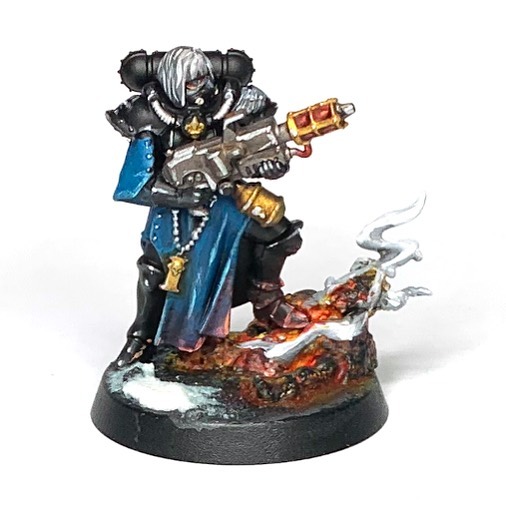
Retribution Stage
The Retribution Stage is where you have whipped up the troops into a furious state and unleashed them onto their foes. Whilst your force is in the Retribution stage, your Chapter Tactics, Order Convictions and Regimental Doctrines are replaced with Crusading Wrath where you add 1” to the movement characteristics of your models and each unit gets a single reroll to wound whenever they shoot ot fight.
On the Agenda front you have Bringing Light to the Darkness. Here you will keep a Bringing the Light tally for every unit in your army, gaining 1 to the tally everytime that unit destroys an enemy unit within 12” or gain 2 to the tally should they destroy an enemy unit in their deployment zone. Each unit gains 1 XP to a maximum of 3 XP per tally mark and you will be adding up the tally for the entire army together and for every 5 marks, gain 1 Religious Fervour Point.
Rounding out the Retribution Stage is Divine Retribution, 5 different abilities available for you to use by spending the Religious Fervour points you’ve spent so long gathering. Each Divine Retribution ability may only be used once during each turn.
Divine Rage costs 1 point and can be spent before a model from your army makes a melee attack which will add 1 to the Damage characteristic to a maximum of 3. Divine Aim lets you ignore all modifiers to a hit roll for that attack. Divine Inspiration costs 1+ points to grant a 6” aura to a character which lets you add the number of points spent to the Combat Attrition test made by units in range of the aura. Use Divine Intimidation for 2 points on an enemy Character within 6” of your character and for the rest of their turn they must halve the range of that enemy character’s Aura abilities. Lastly Divine Fury lets you spend up to 3 Religious Fervour points to increase the result of a charge roll by that amount.
Beanith: Hands down Divine Fury is my favourite pick of the bunch almost guaranteeing charges from deep strike although having said this, I am now doomed to roll 5s from now until the end times. Divine Aim seems a little pointless with the cap on modifiers to hit but it is pretty tempting to spend it on a unit of Thunder Hammer Termies or similar for the extra chance of a successful hit. Spending 2 Religious Fervour points to use Divine Inspiration seems almost like an autocast on a character babysitting large blobs of troops to pretty much nullify any Combat Attrition test forcing your opponent to waste more firepower.
Religious Fervour Points
As mentioned before, your Army of Faith will typically gain Religious Fervour points during the Fervour stage and lose/spend them during the Retribution stage. Once you have reached 20+ Religious Fervour points at the end of any battle, you may choose to switch to the Retribution Stage. Conversely if at the end of a battle during the Retribution Stage your army has 5 or few Religious Fervour points, you must switch back to the Fervour Stage.
At the end of every battle during the Fervour Stage, you will gain Religious Fervour points for any of the following; Winning or scoring a draw will gain D3+3 Religious Fervour points; losing will gain D3 Religious Fervour points; if the enemy Warlord was destroyed, gain D3 Religious Fervour points; and if any enemy Chaos units were destroyed, gain D3 Religious Fervour points.
During the Retribution Stage however, you can lose Religious Fervour points for any of the following; Lose or a draw will cost you D6 Religious Fervour points; if your Warlord was destroyed, lose D3 Religious Fervour points; and if any of your units that were destroyed by a Chaos unit and fail an Out of Action test, lose D3 Religious Fervour points.
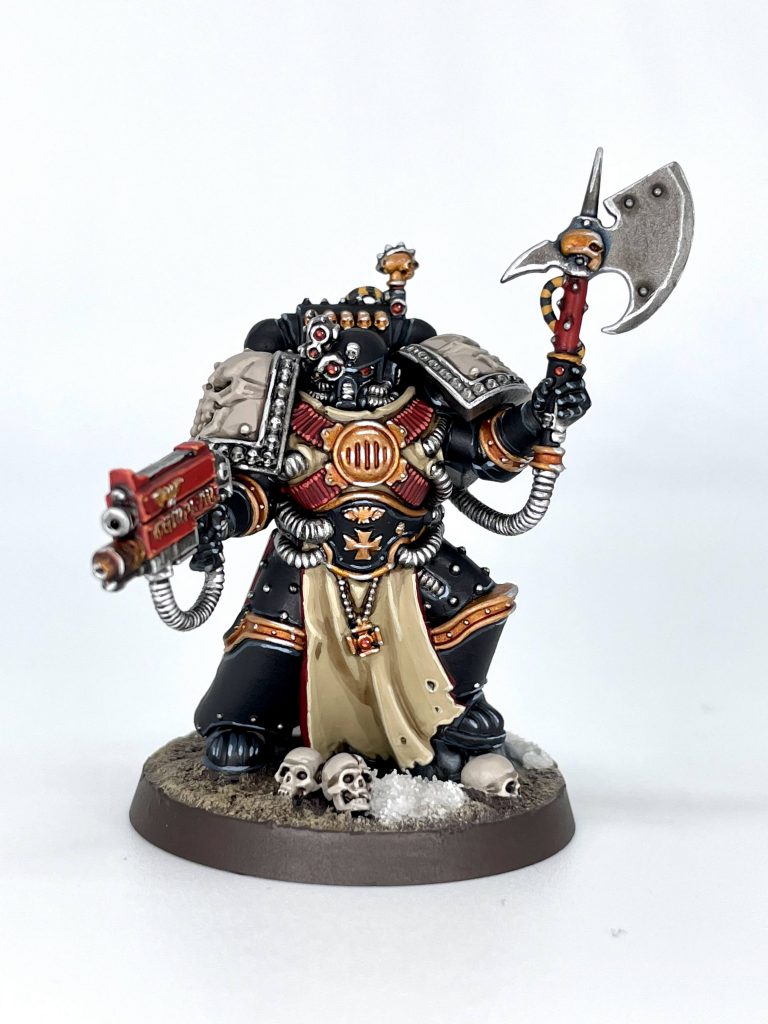
Army of Faith Relics
Of course you can’t have a new Crusade Force without some cool Relics and and those cool relics can be found in the Adepta Sororitas codex and whatever flavour of Marine codex you’re using. The ones here range from meh to kinda cool but not Vortex Grenade cool.
The Artificer Relic, The Blood of Saint Calgar, is a phial of blood of Saint Calgar, collected from the battle where he was laid low by the Despoiler. This fancy glow stick grants the bearer +1 Attack during the Fervour Stage and if the bearer survives the battle, gain 1 Religious Fervour point. Whilst in the Retribution Stage, you can spend D3 Religious Fervour points to gain +1 strength for the turn.
Beanith: I’m already picturing the side eye from Calgar when he learns that one of his Lieutenants on secondment is running around with a phial of his blood.
The Penitent’s Band is a spiked headband worn by your character that feels that they have been found wanting in their duty to the Emperor. This Antiquity Relic gives the bearer rerolls of 1 to hit and wound rolls in melee and if your army has 20+ Religious Fervour points then it becomes a 6” aura for eligible units.
Beanith: I like this one for the most part, it will be a great upgrade for a Smash Lieutenant or similar but I don’t see the aura part happening very often as you can blow through Religious Fervour points very quickly.
The Blade of Retribution is the Legendary Relic of the bunch which can be given to a character that’s already got a blessed blade, power sword or master-crafted power sword. It’s stats are nice at +2 Strength, -4 AP and a flat 3 Damage. During the Fervour Stage it also grants the bearer an additional attack and in the Retribution Stage the weapon’s Strength is boosted to +4.
Beanith: Still a runner up to the Vortex Grenade and I’d still be tempted by the Null-field Generator over this too.
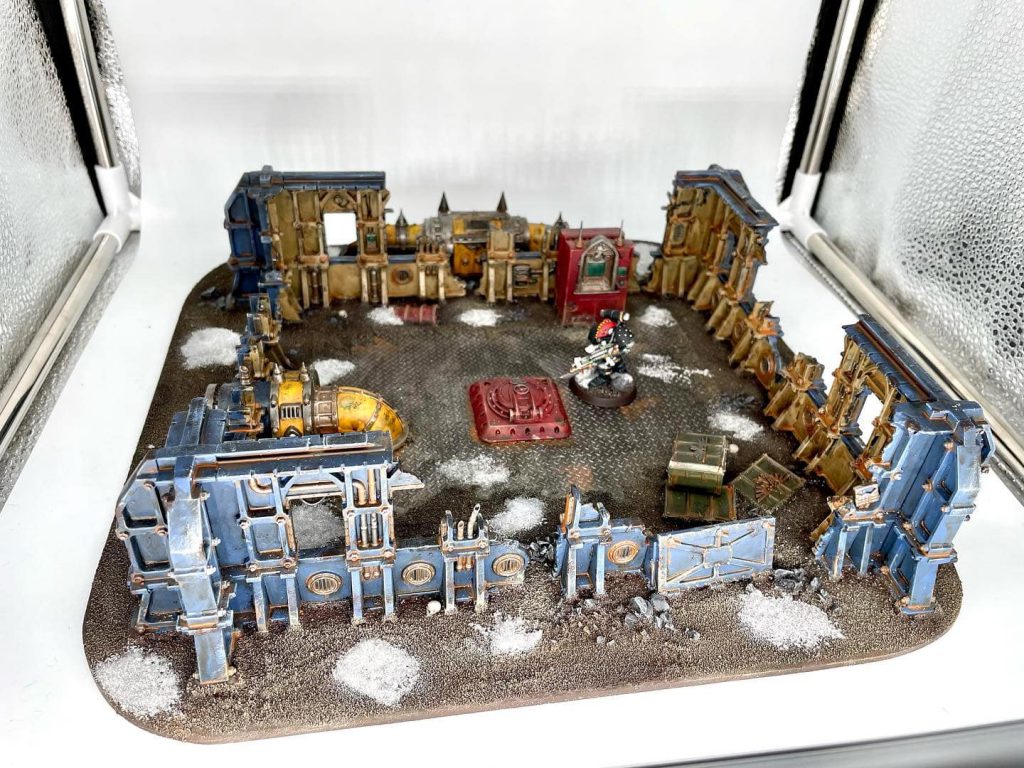
Battlezone: Fronteris
Games Workshop recently previewed some new Sector Fronteris terrain kits, which basically give us full, undestroyed versions of the moon base klaisus terrain. To go along with that release, Vigilus Alone has rules for Battlezone Fronteris, along with theatre of war effects and rules for each piece of the new terrain.
Battlezone: Fronteris Crusade Agendas
There are two Crusade Agendas in battlezone: Fronteris that become selectable in games where you’re playing with the terrain kits. The first of these is Transmit Signal, which you can do on a Vox-Atenna, and gives you the Transmit Signal Action for Characters to do. Send data at least once, and you get 1 XP. Have your signal be acknowledged (a 4+ roll, with a -1 if any atmopshere effects are in play, see below), and you get an extra 2 XP.
The other Agenda is Download Orders, which gives you the Download Orders action for characters to do at an Auspex Shrine and finishes at the end of your turn. If you finish it you get 2 XP and you can swap out one of your other Agendas for a new one. You lose any XP for the discarded Agenda.
These are both kind of neat, and I like the touch about Transmit Signal not getting there if there are weather effects. I really like the idea of having a mission where one side is trying to desperately transmit a signal to request reinforcements before the other side wipes them out, or just making reserves contingent on the signal.
Theatre of War: Fronteris
The Fronteris Theatre of War is a set of rules for playing in the rugged wastelands that Fronteris terrain features are usually built on. There are 6 effects here that you can either roll for or pick, and they all represent weather.
Atmospheric Effects
TheChirurgeon: There are six of these effects, all representing different weather phenomen. My favorite is Acidic Deluge, which has players determine pre-game which terrain features are sheltered and which are open. At the end of each battle round, a unit not wholly within a sheltered feature gets 1 corrosion mark. Once you get 3 marks, that unit gets -1 to its armor saves. This is pretty neat, but perhaps a bit too slow? Will be fun to play with and I like the concept.
The others are mostly just OK. Lighting Strikes is your standard “random mortal wounds” rule, though it prioritizes units near taller terrain features, which is neat. Abrasive Dust Storm is another mortal wound ability, Blasting Games reduces charge and hit rolls, Chilling Blizzard reduces the range of Aura abilities, and Battering Hailstorm is basically like Acidic Deluge but you take mortal wounds instead of taking a penalty to your saves.
Terrain Traits
We get rules for the new terrain. There are four pieces: The Landing pad, the STC Hab-bunker (the closed building), the Auspex shrine (the satellite dish), and the Vox-antenna. These all give Light Cover, and everything but the Auspex Shrine is scalable. The Landing pad and Hab-Bunker are the largest structures here, and despite both being around 3” tall, they have Obscuring, which is honestly for the best since they kind of need it to be useful.
On top of this, each terrain piece has a Narrative Play ability. The landing pad’s Hidden Supplies can boost a unit for a turn, while the Hab-Bunker lets units take shelter from the Acid Rain or Hailstorm Theatre of War effects. The Auspex Shrine and Antenna both have actions associated with the terrain which, upon completion, will boost your nearby units. These are fine. You’re going to forget about them unless you make some part of them the focal point of the mission.
Final Thoughts
TheChirurgeon: Overall I liked these rules more than I expected to. The Campaign rules are whatever – mostly what we’ve already seen save the planet control mechanics, which are fine but unexciting. The Banners of Renown and Armies of Faith rules are very cool however, and if you’ve been looking for a way to combine Templars and Sisters into a single Crusade force I’d highly recommend checking these out. And then also the Bloody Rose rules are right there too.
Beanith: Some fantastic stuff for Narrative Play. Once I’ve finished painting 60 something Ork Infantry I’m planning on using the Army of Faith as my next Crusade Force in the ongoing campaign I’m in with friends. Not sure what flavour of Marines I want to use yet though, the Black Templar are too obvious and even I’m having trouble trying to justify Sisters and Wolves. No matter what I take though, the Ancient will have a Banner of Renown. The War of Faith campaign section is a bit meh but since my local group is on the small side I do like that there’s only two opposing forces this time which makes it easier to have decent sized teams.
Have any questions or feedback? Drop us a note in the comments below or email us at contact@goonhammer.com.
